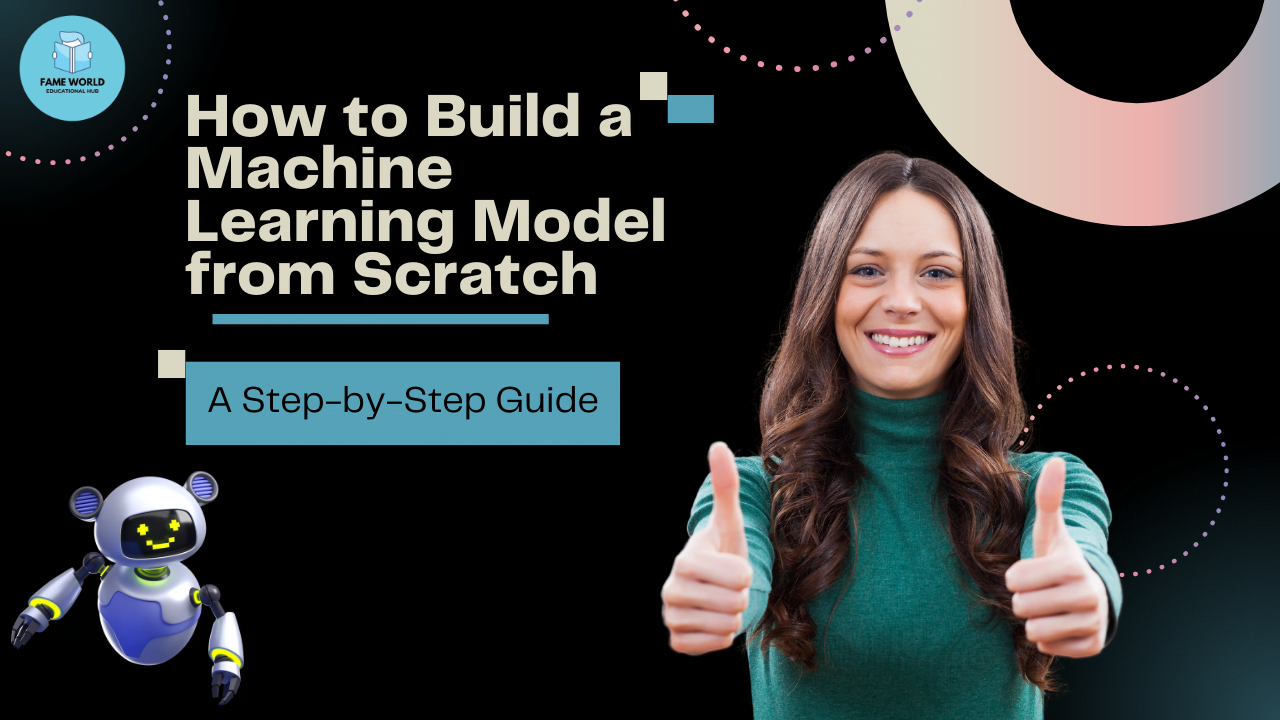Machine learning (ML) is a powerful technology that enables systems to learn from data and make predictions or decisions. Building a machine learning model from scratch is a valuable skill for data scientists and developers, as it deepens your understanding of the underlying processes involved in model creation. In this guide, we’ll walk through the entire process of building a machine learning model from scratch, from problem definition to model evaluation.
Table of Contents
1. [Define the Problem](define-the-problem)
2. [Collect and Prepare Data](collect-and-prepare-data)
3. [Choose a Model](choose-a-model)
4. [Implement the Model](implement-the-model)
5. [Train the Model](train-the-model)
6. [Evaluate the Model](evaluate-the-model)
7. [Tune Hyperparameters](tune-hyperparameters)
8. [Deploy the Model](deploy-the-model)
9. [Conclusion](conclusion)
Define the Problem
Before you start building a machine learning model, you need to clearly define the problem you’re trying to solve. This involves understanding the business context, the goals of the project, and the type of output you need. Common problem types include:
– Classification : Assigning categories to data (e.g., spam detection).
– Regression : Predicting continuous values (e.g., house price prediction).
– Clustering : Grouping similar data points (e.g., customer segmentation).
Example: Suppose we want to build a model to predict whether an email is spam or not (a classification problem).
Collect and Prepare Data
Data Collection
The quality and quantity of your data play a crucial role in the performance of your model. You can collect data from various sources such as:
– Public Datasets : Websites like Kaggle or UCI Machine Learning Repository.
– APIs : Many services provide APIs to collect data.
– Custom Data : Data collected manually or through surveys.
Example: For our spam detection model, we might use a dataset of labeled emails containing features like the frequency of certain words.
Data Preparation
Data preparation involves cleaning and transforming the data into a suitable format for modeling. Key steps include:
– Handling Missing Values : Impute or remove missing data.
– Feature Engineering : Create new features or transform existing ones.
– Normalization/Standardization : Scale features to have a similar range.
– Splitting Data : Divide the data into training and testing sets.
Example: We might need to convert email text into numerical features using techniques like TF-IDF (Term Frequency-Inverse Document Frequency).
Choose a Model
Selecting the right model depends on the problem type and data characteristics. Some common models include:
– Linear Regression : For regression problems.
– Logistic Regression : For binary classification.
– Decision Trees : For both classification and regression.
– K-Nearest Neighbors (KNN) : For classification and regression.
– Support Vector Machines (SVM) : For classification.
– Neural Networks : For complex problems.
Example: For spam detection, a Logistic Regression model might be a good starting point.
Implement the Model
You can implement a machine learning model using various programming languages and libraries. In Python, popular libraries include:
– NumPy : For numerical operations.
– Pandas : For data manipulation.
– Scikit-learn : For machine learning algorithms and utilities.
Example Implementation:
“`python
import numpy as np
import pandas as pd
from sklearn.model_selection import train_test_split
from sklearn.feature_extraction.text import TfidfVectorizer
from sklearn.linear_model import LogisticRegression
from sklearn.metrics import accuracy_score, classification_report
Load data
data = pd.read_csv(’emails.csv’)
X = data[‘text’]
y = data[‘label’]
Prepare data
vectorizer = TfidfVectorizer()
X_transformed = vectorizer.fit_transform(X)
X_train, X_test, y_train, y_test = train_test_split(X_transformed, y, test_size=0.3, random_state=42)
Initialize and train model
model = LogisticRegression()
model.fit(X_train, y_train)
Make predictions
y_pred = model.predict(X_test)
Evaluate model
accuracy = accuracy_score(y_test, y_pred)
report = classification_report(y_test, y_pred)
print(f’Accuracy: {accuracy}’)
print(f’Classification Report:\n{report}’)
“`
Train the Model
Training involves fitting the model to the training data. During training, the model learns the relationships between input features and target labels by minimizing a loss function.
Example: In logistic regression, the model learns the coefficients that best fit the data to predict the probability of an email being spam.
Evaluate the Model
After training, it’s crucial to evaluate the model’s performance using the test data. Common metrics include:
– Accuracy : The proportion of correctly predicted instances.
– Precision : The proportion of true positives among predicted positives.
– Recall : The proportion of true positives among actual positives.
– F1 Score : The harmonic mean of precision and recall.
Example: We use accuracy and the classification report to assess how well our logistic regression model performs on the test set.
Tune Hyperparameters
Hyperparameter tuning involves adjusting the model’s parameters to improve performance. Techniques include:
– Grid Search : Testing various combinations of hyperparameters.
– Random Search : Randomly sampling hyperparameter values.
– Cross-Validation : Splitting the data into multiple folds to validate the model.
Example: For logistic regression, you might tune parameters like regularization strength.
Deploy the Model
Deploying the model involves integrating it into a production environment where it can make predictions on new data. Common deployment options include:
– Web Applications : Using frameworks like Flask or Django.
– APIs : Creating RESTful APIs to serve the model.
– Cloud Services : Utilizing platforms like AWS, Azure, or Google Cloud.
Example: You might create a web application where users can input email text and get predictions on whether the email is spam or not.
Conclusion
Building a machine learning model from scratch involves several steps, including problem definition, data collection and preparation, model selection, implementation, training, evaluation, hyperparameter tuning, and deployment. By following this guide, you gain a comprehensive understanding of the machine learning workflow and develop the skills to tackle various ML problems effectively.
Feel free to experiment with different models, techniques, and data to further refine your skills. Happy modeling!



